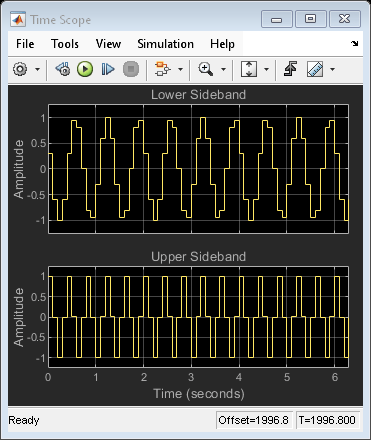Analytic Signal
Compute analytic signals of discrete-time inputs
Libraries:
DSP System Toolbox /
Transforms
Description
The Analytic Signal block computes the complex analytic signal y corresponding to each channel of the real input u.
where and H{ } denotes the Hilbert transform.
The block computes the Hilbert transform using an equiripple FIR filter or a Kaiser window FIR filter. When the filter order is low, the block uses an equiripple FIR filter. For higher filter orders, if the equiripple design fails, the block uses a Kaiser window FIR filter.
This block supports C/C++ code generation and SIMD code generation. For details, see Code Generation.
Examples
Ports
Input
Output
Parameters
Block Characteristics
Data Types |
|
Multidimensional Signals |
|
Variable-Size Signals |
|
More About
Algorithms
The algorithm computes the Hilbert transform with an equiripple FIR for the specified order n using the Remez exchange algorithm. For higher filter orders, if the equiripple design fails, the algorithm uses a Kaiser window FIR filter instead. In both cases, the filter has a linear phase with a constant group delay of n/2 input samples.
References
[1] Claerbout, Jon F. Fundamentals of Geophysical Data Processing with Applications to Petroleum Prospecting. Oxford, UK: Blackwell, 1985.
[2] Marple, S. L. “Computing the Discrete-Time Analytic Signal via FFT.” IEEE® Transactions on Signal Processing. Vol. 47, 1999, pp. 2600–2603.
[3] Oppenheim, Alan V., Ronald W. Schafer, and John R. Buck. Discrete-Time Signal Processing. 2nd Ed. Upper Saddle River, NJ: Prentice Hall, 1999.
